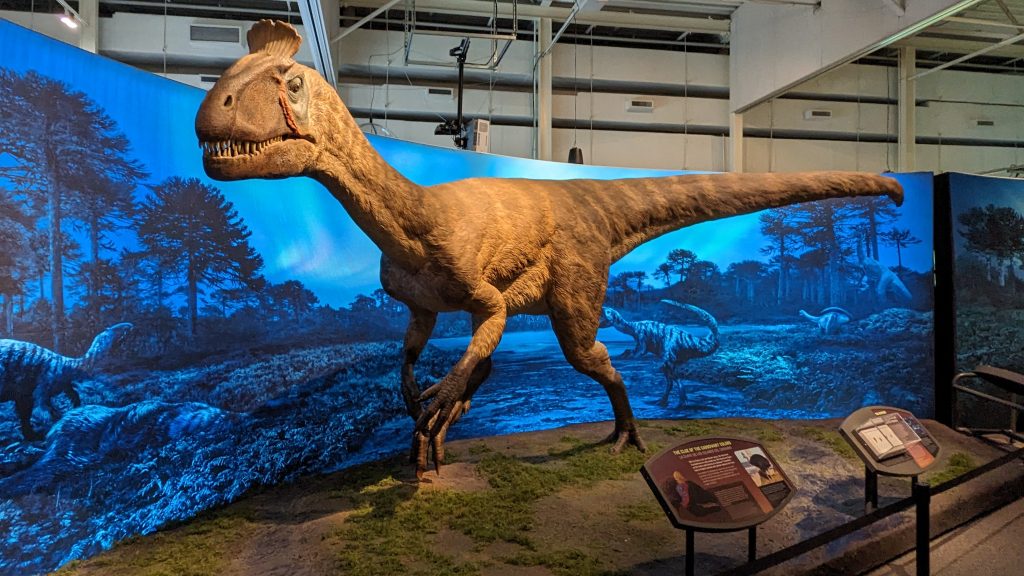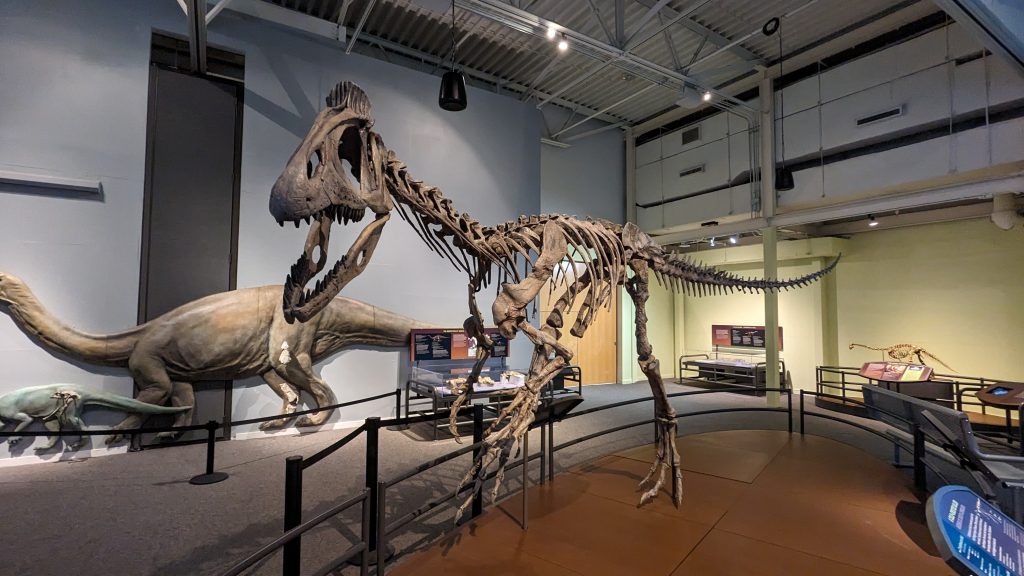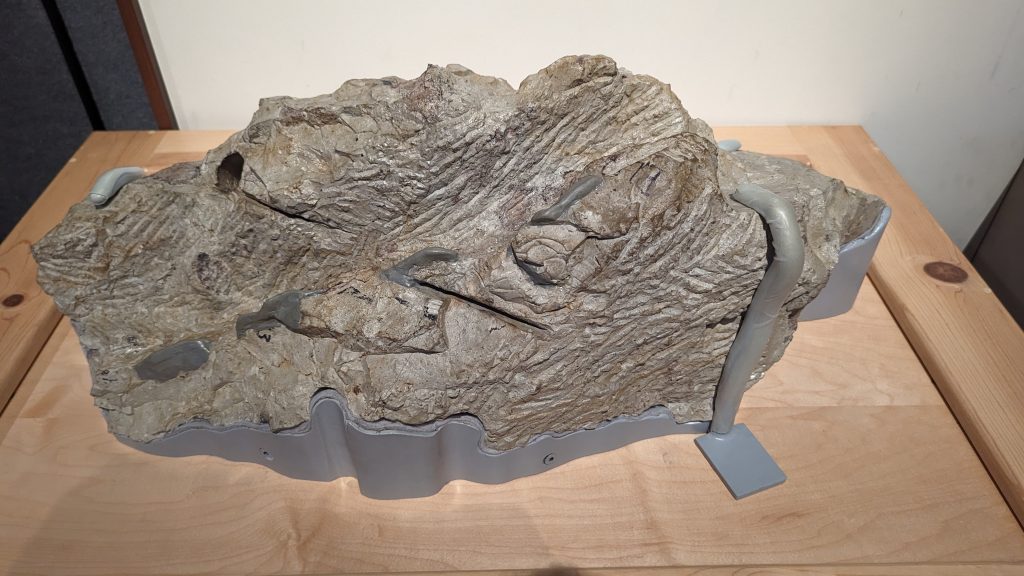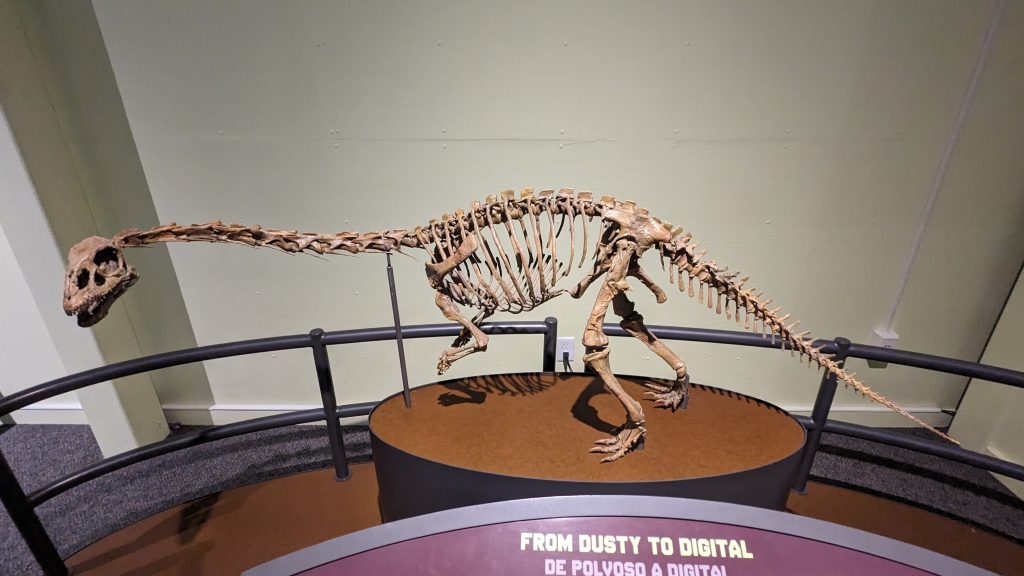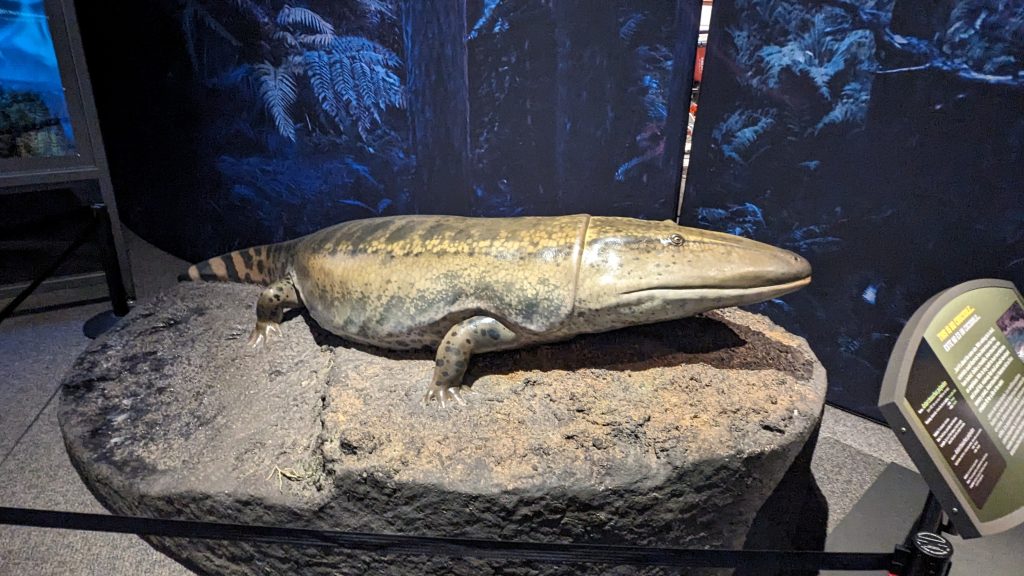While Jennifer was exploring the Butterfly Gardens at Florida Museum at the University of Florida in Gainesville, Fla., I opted instead to visit a traveling exhibition on display at the museum entitled “Antarctic Dinosaurs.” The exhibit was developed by the Field Museum in Chicago in partnership with the Natural History Museum of Los Angeles County, Discovery Place in Charlotte, NC, and the Natural History Museum of Utah.
I mean, I never really thought about it, but paleontologists must have a much different experience searching for fossils on the Antarctic continent than they do in other warmer climes.
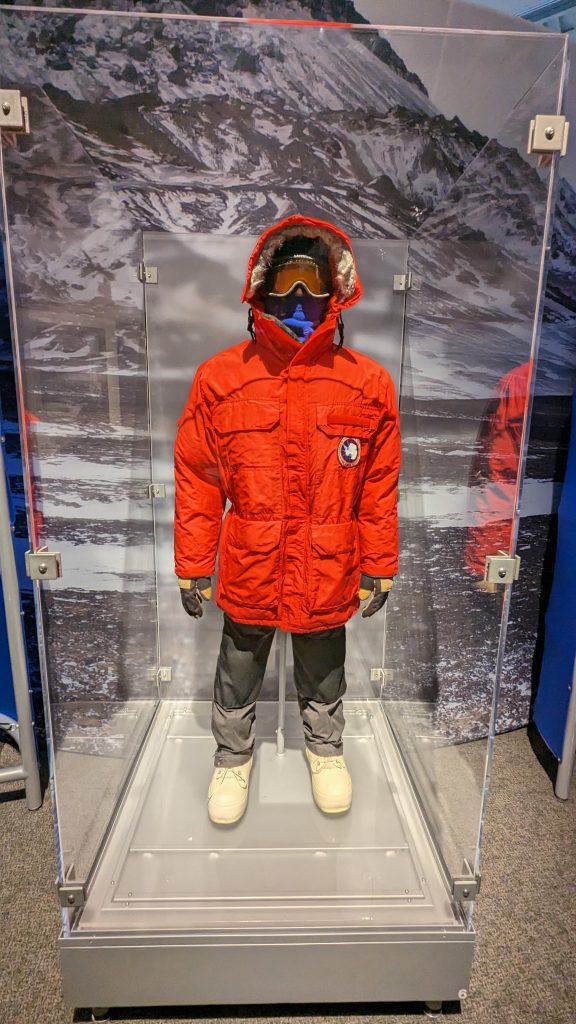
The exhibit began with an overview of the clothing and gear required for exploring in the frigid temperatures of the southernmost continent, as well as the heavy-duty equipment used to drill core samples and uncover secrets thousands of feet below the surface.
After the introduction to Antarctic exploration, visitors can explore dinosaur skeletons, casts of bones, interactive models, large-scale reconstruction, and more than 60 fossils from the Jurassic period.
200 million year ago, Antarctica was a lush habitat. But comparisons of fossils found in Africa and Antarctica provide evidence for the Pangaean supercontinent that began to break apart around 200 million years ago, at the end of the Triassic and beginning of the Jurassic. Similarities between the dinosaurs found in both places point to the conclusion that the continents were once joined.
Fossils and reconstructions of Cryolophosaurus, Glacialisaurus, and the somewhat goofy-looking Antartosuchus were among the most interesting specimens on display.
Cryolophosaurus features a ridged crest on its head; from similarities with the modern cassowary bird of Australia and New Guinea, scientists believe the Cryolophosaurus may have also had a ridged crest and been partly feathered!
